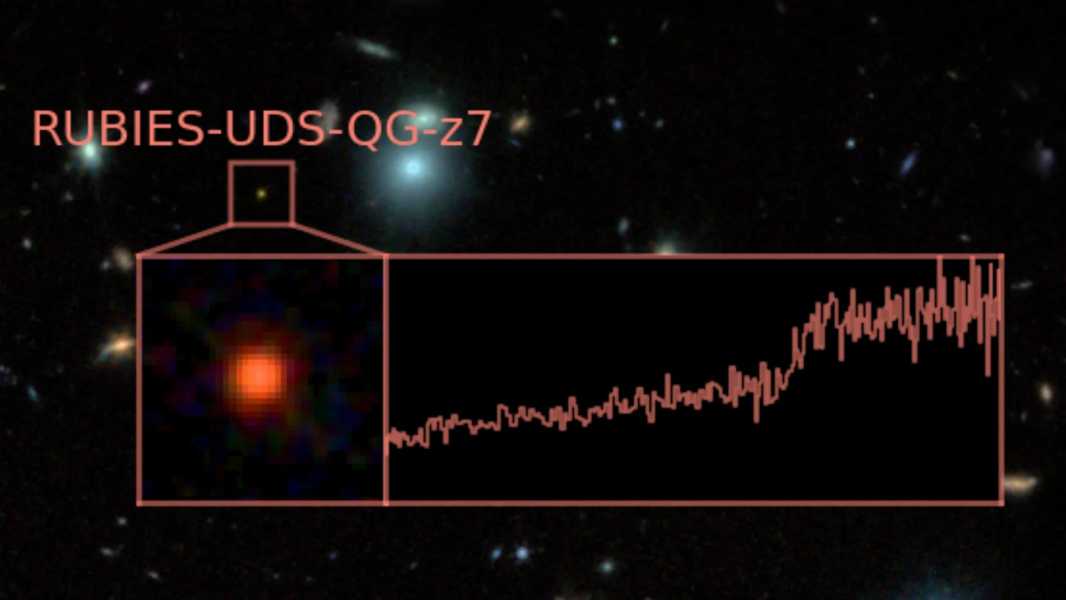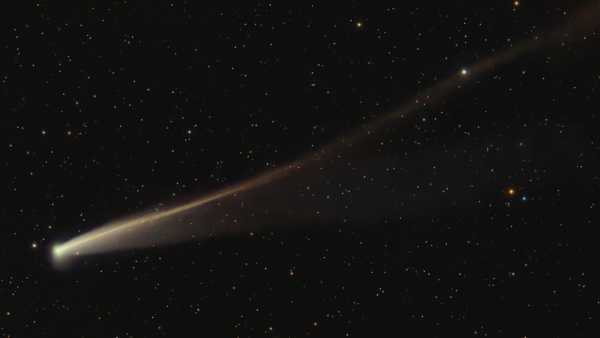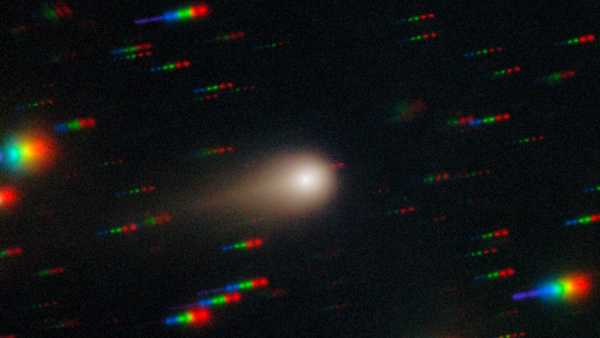
The record-breaking early galaxy RUBIES-UDS-QG-z7 and its spectra observed with the JWST. (Image credit: NASA/CSA/ESA, A. Weibel, P. A. Oesch (University of Geneva), RUBIES team: A. de Graaf (MPIA Heidelberg), G. Brammer (Niels Bohr Institute), DAWN JWST Archive)
Astronomers using the James Webb Space Telescope (JWST) have discovered the most distant (and therefore earliest) massive “dead” galaxy to date. This discovery suggests that galaxies “died” in the universe much earlier than previously thought.
The “death” of a galaxy means that active star formation slows down or even stops, causing its growth to stop. Such dead galaxies are officially called “quiescent” or “frozen.” The early dead galaxies observed by JWST are called “red and dead” because they lack massive, hot, young blue stars and contain many old, small, red stars. They are also nicknamed “little red dots” because of their appearance in JWST images.
The light from this new record-breaking galaxy, designated RUBIES-UDS-QG-z7, has traveled to us for 13 billion years, meaning JWST saw it as it was just 700 million years after the Big Bang. This makes it the first so-called massive quiescent galaxy (MQG) observed in the infancy of the 13.8-billion-year-old universe.
“We have discovered a galaxy that formed 15 billion solar masses of stars and then stopped star formation when the universe was only 700 million years old,” team member Andrea Weibel of the Department of Astronomy at the University of Geneva (UNIGE) told Space.com. “This makes RUBIES-UDS-QG-z7 the most distant massive, quiet galaxy known to date.”
This discovery could challenge our models of how galaxies evolve and ultimately stop growing as star formation ends.
“The observation implies that some galaxies stopped forming stars when the Universe was only 700 million years old,” Weibel said. “Models and simulations so far contain very few such objects, more than 100 times fewer than the existence of RUBIES-UDS-QG-z7 suggests. This suggests that the physical processes and mechanisms governing star formation and its cessation in galaxies in the early Universe may need to be reconsidered.”
Live fast, die young.
Quiet galaxies are common in the immediate vicinity of the Milky Way. This is to be expected, since the farther we look, the further back in time we travel. Thus, the local massive galaxies have had plenty of time to begin forming stars, grow to enormous masses, and then exhaust the gas and dust needed for star formation, thus becoming extinct. We should expect that more distant galaxies are still enjoying their star-forming youth.
However, as JWST went deeper into the past, it found earlier MQGs. Several of these red and dead galaxies were found as early as 1.2 billion years after the Big Bang. Discovered by the Red Unknowns: Bright Infrared Extragalactic Survey (RUBIES), RUBIES-UDS-QG-z7 pushes back the discovery of MQGs by 500 million years.
“Massive galaxies observed early in the Universe had very little time to form their stars. This means that they must have formed quickly and efficiently, which helps us constrain and, in some cases, even challenge theories and models of galaxy formation and growth,” Weibel said. “RUBIES-UDS-QG-z7, however, is not only massive, but had already stopped forming stars 50 to 100 million years before
Sourse: www.livescience.com





